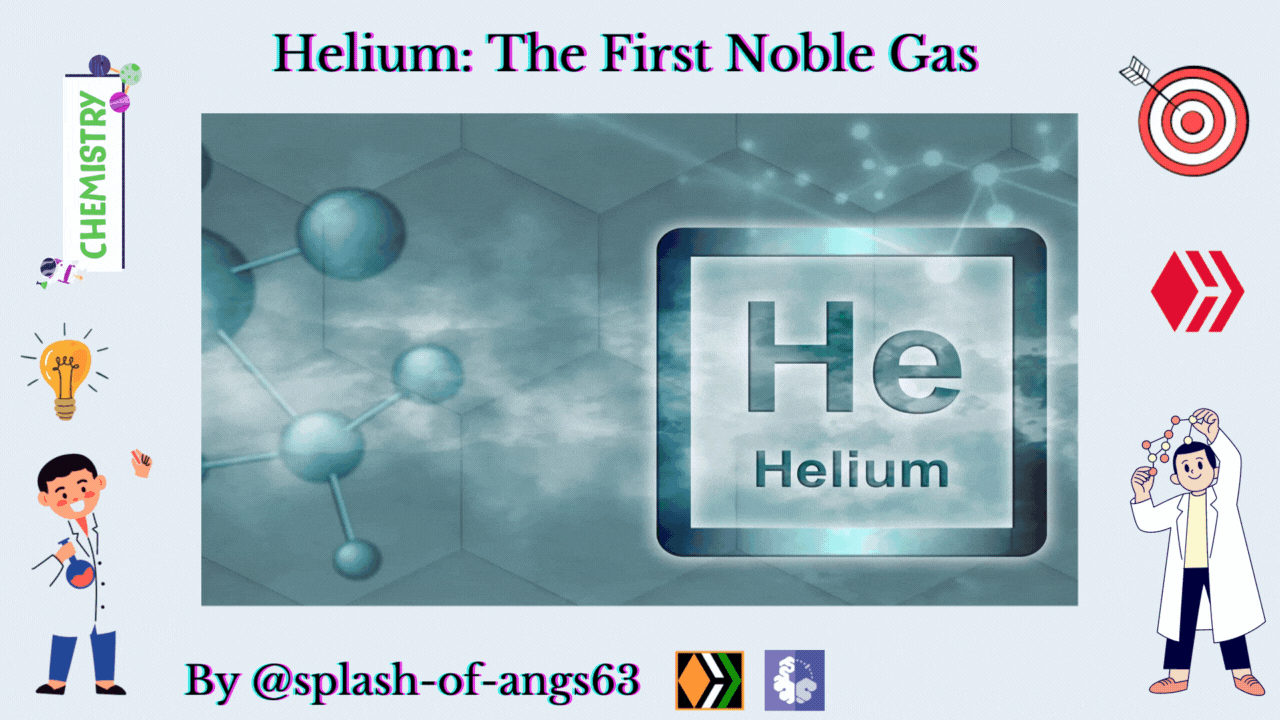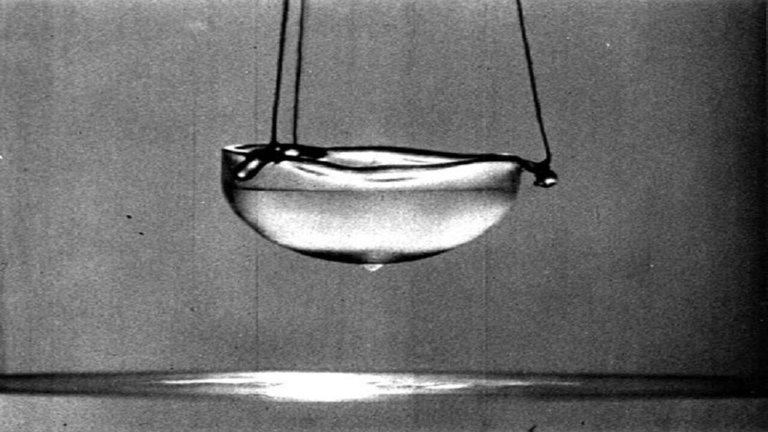Greetings to everyone! In my last post, as I have mentioned that we are going to discuss about the first noble gas. So what is it? Helium! Correct. We have discussed about the elemental hydrogen and the gaseous diatomic form already. But what about He, does it also possess two forms like hydrogen? After understanding the properties and behavior of Hydrogen, today it is time for the second element of the periodic table. Does the element possess any similarities? Apart from the properties and applications, we shall also find answers to these questions.

Helium, symbolized by "He" on the periodic table, is the second most abundant element in the universe after hydrogen. Named after the Greek word "Helios," meaning the sun, helium plays a crucial role in various scientific, industrial, and recreational applications. This noble gas has captivated scientists and engineers alike due to its fascinating properties and diverse uses.
He is the second element in the periodic table, with atomic number 2. All helium atoms have 2 protons and 2 electrons in their nuclei. Helium
has two isotopes, the 4He2 has 2 neutrons in its nucleus and by far the most important isotope among the two, the lighter isotope 3He2 has less abundance and has 2 protons and 1 neutron in its nucleus with a mass number of 3.

Helium is a noble gas, so it exists as atoms of the element that are never bonded to other atoms. The Lewis symbol for helium is simply He with two dots. This indicates a very important characteristics of atoms. As electrons are added to atoms with increasing atomic number, they are added to different energy levels called electron shells. The one electron from hydrogen, H, goes to the first electron shell, which has the lowest possible energy. The second electron added to make the helium atom also goes to the first electron shell. This lowest energy shell can accommodate up to 2 electrons which is the maximum limit, so helium has a completely filled electron shell. Atoms with a complete electron shell do not lose, gain or share electrons and therefore do not enter into any chemical reactions with other atoms. Such atoms exists alone in the gas phase, and the set of elements with which they are composed are called noble gases. Helium is the first noble gas!
Properties of Helium
Helium has a very low density of 0.164 g/L at 25°C and 1 atm pressure. Elemental helium is the second least dense element after hydrogen. It is this low density property that makes helium so useful in balloons, including hot air balloons, where it can stay aloft for days and reach very high altitudes.

Helium is pumped from the ground with a variety of sources of natural gas, some of which contain up to 10% helium by volume. Helium gas was first seen in the sun at specific wavelength of light emitted by hot helium atoms. Drillers looking for natural gas in southwestern Kansas discovered an underground source of helium and tried to ignite gas in the well, but were disappointed to find out that it would not burn because it was pure helium!
Helium has the highest thermal conductivity among all gases. This characteristic makes it an essential coolant in various high-temperature applications, including nuclear reactors and certain industrial processes.
Applications of Helium
Helium is chemically non-reactive and serves no chemical purpose other than to provide a chemically inert atmosphere. Helium is a non-toxic, odorless, tasteless and colorless gas that finds various applications for its unique properties.
Applications in weather balloons and airships have already been mentioned.
Due to the low solubility of helium in the blood, deep-sea divers and people with certain respiratory diseases mix helium with oxygen for breathing. Divers using helium can avoid the severe pain called "the bends" caused by nitrogen bubbles created from dissolved nitrogen in the blood.

The most common use of helium is as a supercooled liquid that boils at 4.2 K above absolute zero (-269°C), especially in emerging cryogenic research where the temperature is not too high. Some metals are superconducting at such temperatures, so helium is used to cool electromagnets and shrink magnets to create very strong magnetic fields. Such magnets are part of an advanced medical technique called nuclear magnetic resonance (NMR). Adapted for medical use, the same kind of device with some modifications called an MRI is used as a diagnostic tool that examines areas of the body for evidence of tumors and other diseases.

Helium's inert and non-toxic nature makes it an ideal tracer gas for detecting leaks in various systems, such as refrigeration units, pipelines, and vacuum chambers.
Why He2 does not exists?
The simple answer to this can be given and verified by the Molecular Orbital Theory (MOT). We can find out the bond order if He2 does exists with the help of MOT.
Since He atom has 2 electrons, so He dimer should be having 4 electrons in its structure. The electronic configuration of He2 is σ1s2 σ*1s2
So, the hypothetical molecular orbital energy level diagram of He would be like this,

Now, from the MOT diagram, it has 2 electrons in the bonding molecular orbital (BMO), Nb and two electrons in anti-bonding molecular orbital (ABMO), Na
.
From the formula of bond order, we have
Bond order, BO = 1/2 (Nb-Na)
BO = 1/2 (2-2) = 0
Thus, as the bond order for He2 comes out to be 0, so He2 does not exists naturally.
It's worth mentioning that there are other molecular helium species, such as helium dimers (He2*), which exist in excited and metastable states, but they are also not stable under normal conditions and quickly revert to separate helium atoms.
Hydrogen feels like helium
Examining the Lewis symbol for Helium and the Lewis formula for elemental H2, it shows that each of the two hydrogen atoms in the H2 molecule can lay claim to 2 electrons, so it becomes the same as a helium atom with 2 electrons.
Note that helium is a noble gas with 2 electrons. Each H atom in H2 has 2 electrons, although they are shared. This indicates a basic rule of chemical bonding that the atoms of an element will tend to take on the same electron configuration as the nearest noble gas. In this case, hydrogen, which preceded helium in periodic table, gains the noble gas configuration of He by sharing electrons.
Conclusive thoughts
Helium's unique properties and diverse applications have cemented its place as an indispensable element in modern society. From lifting balloons to enabling cutting-edge scientific research, this noble gas continues to contribute significantly to various industries. However, as helium is a finite resource and crucial for scientific research, conservation efforts and innovative alternatives are necessary to ensure its availability for future generations.
As technology advances and our understanding of helium deepens, there may be even more exciting discoveries and applications on the horizon. As we explore new frontiers and challenge the boundaries of science and engineering, helium remains an intriguing element that inspires curiosity and innovation.
Until we meet again!
Hydrogen: The Simplest Atom |ChemFam #51|
Elements, Atoms and Atomic Theory |ChemFam #50|
Have You Thanked A Clod Today? |ChemFam #49|
Nuclear Energy: Will It Rise Again? |ChemFam #48|
SCRAP Giveaway | Terracore | Draw #10 |
Soaps: An Essential and Effective Cleansing Agent |ChemFam #47|
SCRAP Giveaway | Terracore | Draw #5 |
Chemicals in Food : Debunking Myths and Ensuring Safe Consumptions |ChemFam #46|
Unveiling The Secrets of Antiseptics and Disinfectants |ChemFam #45|
What are Antimicrobials and Antimicrobial Drugs? |ChemFam #44|
Therapeutic Action of Different Classes of Drugs |ChemFam #43|
Introduction to Drugs and Drug-Target Interaction |ChemFam #42|
Scientists Analyze a Single Atom With X-Rays For The First Time |ChemFam #41|
Can We Slow Down Aging? |ChemFam #40|
Studying The Cluster Compounds: The LNCC |ChemFam #39|
PS The thumbnail image is being created by me using canva.com by using template image from Alchimed


Nice one @splash-of-angs63
Quite a list of fun facts about Helium.
As you mentioned, "helium is a finite resource and crucial for scientific research". You may be aware of this that there's a growing concern among doctors and scientists regarding the limiting source of helium, and we are running out of it.
Recently, a study from the University of Oxford, Cheng and co-workers have reported a new way to reach untapped helium reserves. The research was published in a Nature article, you may find it interesting.
Thanks for sharing 👍
Thank you for your thoughtful comment @vinamra !
It's great to see how researchers at the University of Oxford are exploring new methods to access untapped helium reserves, considering the growing concern about its limited availability. Helium plays a vital role in various scientific and medical applications, making such advancements crucial for the future. I appreciate you sharing this information with us! 👍
This post has been manually curated by @bhattg from Indiaunited community. Join us on our Discord Server.
Do you know that you can earn a passive income by delegating to @indiaunited. We share more than 100 % of the curation rewards with the delegators in the form of IUC tokens. HP delegators and IUC token holders also get upto 20% additional vote weight.
Here are some handy links for delegations: 100HP, 250HP, 500HP, 1000HP.
100% of the rewards from this comment goes to the curator for their manual curation efforts. Please encourage the curator @bhattg by upvoting this comment and support the community by voting the posts made by @indiaunited.
Thanks for your contribution to the STEMsocial community. Feel free to join us on discord to get to know the rest of us!
Please consider delegating to the @stemsocial account (85% of the curation rewards are returned).
Thanks for including @stemsocial as a beneficiary, which gives you stronger support.
Congratulations your publication has been chosen among the best of the day.
KEEP CREATING GOOD CONTENT.